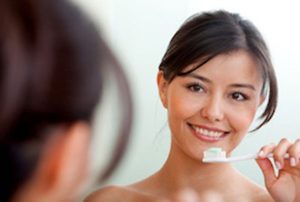Productive Hygiene – It’s Possible
 Having worked as a hygienist for over 30 years, I know that hygiene within any dental office should be profitable. Hygienists at a bare minimum should be producing three times their wages and benefits value (yes, include the entire value of the salary and benefit package). If your hygiene department is not at that level or better, here are some things for you to consider.
Having worked as a hygienist for over 30 years, I know that hygiene within any dental office should be profitable. Hygienists at a bare minimum should be producing three times their wages and benefits value (yes, include the entire value of the salary and benefit package). If your hygiene department is not at that level or better, here are some things for you to consider.
- Periodontal Protocol
Do you have a set protocol for when to intervene in the disease process? Think about your mouth. When would you want someone to bring to your attention that you have infection in your mouth? How many 4 mm bleeding sites will you accept before doing something other than a prophy? Is there bone loss showing on the radiographs caused from bacterial infection? I urge you to set a protocol for every hygienist to follow and then present it to the entire team. This is a conversation everyone in the office needs to be prepared to discuss and explain to patients.
- Reactivation
Every office needs to have a system for contacting overdue patients and it needs to be followed every month so patients don’t fall through the cracks. It’s common to see the back door of your practice get opened wider and wider each year because no one makes time to work this system. The best way to ensure a patient will come back to your practice is to pre-appoint them for their next visit. We recommend that 90%+ of your hygiene patients should have their next visit scheduled before leaving. Review our recommendations for contacting overdue patients and make a commitment to work this system every week.
- Template for Hygiene
Many offices don’t even consider saving blocks for hygiene. When new patients come to the practice, they want their teeth cleaned. Do we have blocks set aside for new patient in the hygiene schedule? What about periodontal procedures? If we are enrolling patients into periodontal therapy, we must make sure we have saved appointment times. We send a mixed message when creating urgency for treatment and then can’t get them appointed for 6-8 weeks. Make sure you save appointment blocks for both new patients and periodontal therapy.
- Service Mix
Exams, x-rays, and prophies are the most common procedures completed in hygiene. If you want to be productive in hygiene you must expand your service mix. Think of all the things that you can offer to patients to reduce their risk of infection or to improve or enhance their smile. Consider fluoride treamtents, caries control, impressions, whitening, desensitizing, sealants, oral hygiene aids, radiographic follow up (periapicals) and cancer screening. When you offer value added services to your patients, they feel well-cared for and you stay productive, too.
- Same Day Service
How many times do you see something in the mouth that would just take a few minutes to complete, but you pass it off to another day or you decide to watch it? Review your charts in advance and see if the patients have any unscheduled treatment and see if you can make it happen for them that day by discussing it at a morning huddle. With a little team effort you can save the patient a return visit, and that makes everyone happy!
- Co-Diagnosis: IOC, radiographs, hard tissue
Every hygienist should be pre-framing patients about possible restorative treatment prior to the doctor entering for the periodic exam. If hygienists aren’t comfortable with this, it may mean that they need some training and case study review. Help all of the team to understand when the doctor recommends specific treatments. It saves time during the exam and keeps doctors in the room for much less time. Show them rather than tell them by using an intra-oral camera. A picture is worth a thousand words.
- Appointment Sequence
Every hygienist in the office should follow the same sequence for appointment types. IF you are using a 60 minute appointment for adult recare appointments, divide the appointment into 20 minute segments. The first twenty minutes is geared to diagnostics – gather all the data needed to evaluate risk for treatment planning. The middle 20 minutes is used to treat. This is when the hygienist scales and polishes the teeth. IF more than 20 minutes is necessary, it may mean that this patient is more than an adult prophy. The final 20 minutes is for the doctor exam, education, dismissal, and room turnover. This allows the doctor to know that after twenty minutes, it is a green light for coming in to check the patient because diagnostics are complete.
When dental offices pay attention to these systems, hygienists will not only be productive, but your patients will be getting five-star care.
Have a great experience with PDA recently?
Download PDA Doctor Case Studies


















